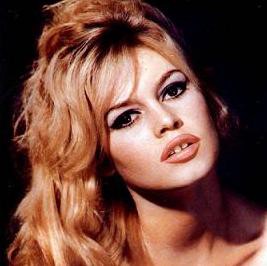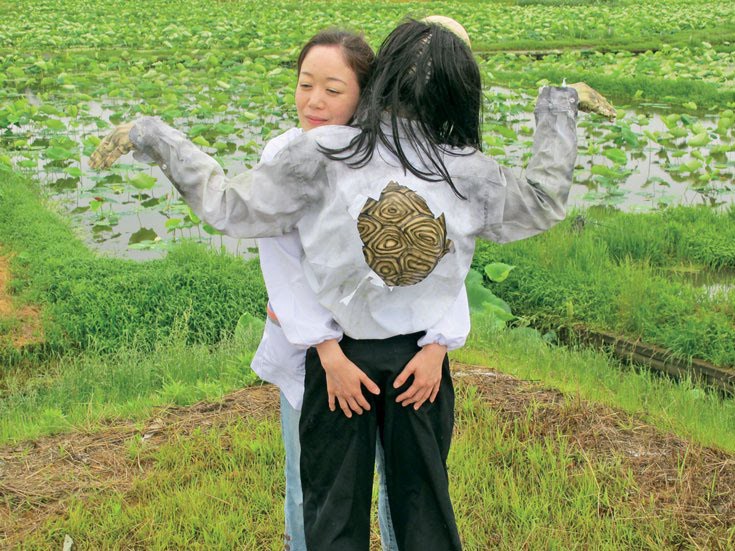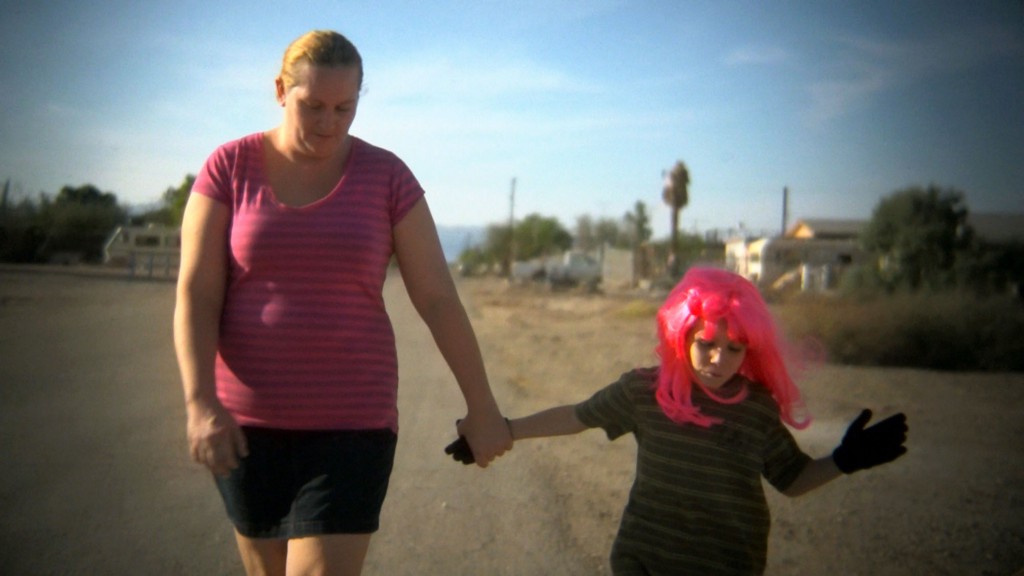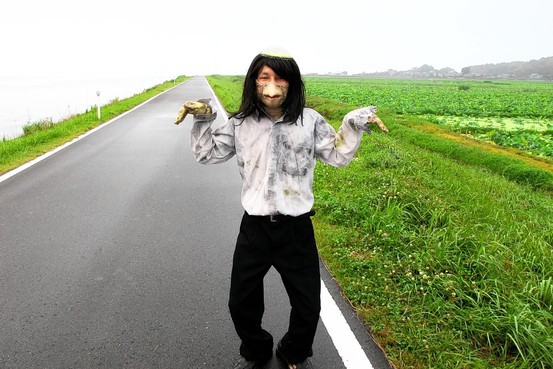Rest Stops On The New Jersey Turnpike In Order Of Jerseyness, Worthiness Of The Former State...
Rest Stops On The New Jersey Turnpike In Order Of Jerseyness, Worthiness Of The Former State Residents They Are Named After
A listicle without commentary.

12. Woodrow Wilson
11. Vince Lombardi
10. Walt Whitman
9. John Fenwick
8. Clara Barton
7. Thomas Edison
6. Alexander Hamilton
5. Grover Cleveland
4. J. Fenimore Cooper
3. Joyce Kilmer
2. Richard Stockton
1. Molly Pitcher
Should You Memoir? "Are You Pat Nixon In China?"

“[T]here are good reasons to embark on a memoir: the world and the self collide in a particular way that only you, or mostly you, can narrate; you would like a preemptive grab at controlling the discourse. For instance: Are you Winston Churchill? Are you Nixon in China? Are you Pat Nixon in China? Did you compose Nixon in China? (Its composer, John Adams, has in fact written an engaging memoir.) Are you connected to a fascinating and underexplored chapter in history in any manner whatever? Are you a professional storyteller with a beautiful prose style and some autobiography begging for reportage? Are you a trenchant thinker with incisive analytical powers? Do you have a social cause you would like to advocate strenuously? And if none of the above, are you Brigitte Bardot?”
— “That many young people are already writing their memoirs is no longer a funny thing to say but an actual cultural condition.” — Lorrie Moore
Class Fictions, Reality Poetics And Zany Sex At Tribeca
by Seth Colter Walls

When living as young and less than comfortable in New York, adoption of a willed ignorance regarding some class distinctions is in order. You naturally choose your own “can’t-care” moments, but at some point, simply everyone breaks. Also: few can keep up with each and every conversation anyway; choices must be made regarding which ambient fashion truths to blow past and ignore.
That in mind, step this way with me. When I was a rice n’ beans-subsisting college kid, it could have been a function of my fancy-meter’s needle constantly skipping in the fritzed-out red zone of class detection — but I simply had no idea at all that the Tribeca Film Festival was ever considered anything but recherche. It seemed impossibly glam and refined, yet another Shangri-la for aspiring culture nerds to airily daydream about someday crashing. So leave it to the Times’ Stephen Holden to show up my decade-long class ignorance with his curtain-raiser for this year’s edition of the event, which apparently is no longer “considered a threat to the status quo” in the finer circles where there was once “grumbling.”
Seriously, there was actually once tony grumbling about the establishment-threatening properties of something DeNiro birthed? At least we’re all a decade hipper now.
Here is one of the other things cinephiles have learned, or at least come around to accepting, since the spring of 2002. Fred Wiseman can fall back; realism hasn’t been about three Super-16mm lenses and the truth for a while. Post-Gummo, and post-Werner Herzog’s exhaustive repping for Harmony Korine’s conspicuously undercover humanity, we’re primed to expect a contrived fictional heart beating in our documentaries. Especially those about marginal communities. It’s just part of the fashion now — you can ask Agnes B. if you don’t believe.
***

Bombay Beach, from first-time documentarian Alma Har’el is the latest entry in this tradition. “The desolate and surreal Salton Sea in California stands as a formidable metaphor for the broken American dream,” its press kit says — and it ain’t wrong. (Disclosure: a close friend of mine introduced Har’el to the area while she was location scouting for a Beirut video.) After rescuing a few flickering seconds of vintage, come-hither tourism adverts from the obscurity of mid-American Century optimism, Har’el smash-cuts us to the desperate, contemporary conditions of at-risk folks inhabiting a loosely knit shitcan archipelago chain of decaying towns dotting the titular beach. When reduced to stock types, it’s easy to recognize some of the denizens: the high-school kid who wants out via the chimeral football scholarship, an ex-con dizzy from a lack of options (or else just congenital incoherence), and the well-meaning if grizzled old racist grasping onto withering decrepitude with every last flaking fingernail.
Whenever this hopelessness becomes too frowny-face familiar, an aestheticism posited as external projection of interior soulfulness takes over. Witness the (black) running back and his (white) girlfriend, who execute a fluidly conceived dance number near a gazebo after the latter narrowly avoids the fate of seeing compromising photos distributed about their school by her bitter ex. (Rightly, Har’el’s choreographer gets a line in the credits roughly equivalent to that given to Zach Condon, who scored the movie.) This contrived movement is all beautiful stuff, as is the set-designed interlude wherein little kids fantasize about going on a grown-up date. When Benny, the real heart of Bombay Beach, mistakes one meaning of “class” (as a marker) for another (i.e., the place where he plays with markers), he’s decidedly left on the outside by the other kids.
The outside is where you get the sense Benny ultimately, most happily belongs, what with his innocently donning a bright pink wig and indulging in “I’m a girl” ideation while walking down the street with his mother. “This ain’t Halloween,” a genuinely perplexed-seeming man observes while riding past in his junker.
Truly, this isn’t a pretend tour through hell. Benny gets juiced with enough Ritalin to drop a small horse, and when that doesn’t make him perform well in school, his doctors prescribe Lithium — enough perhaps to send Benny into a seizure. When his nobly struggling mother attempts to get an answer about potential causality from a neurologist, he (in full view of Har’el’s camera) merely kicks the ball back over to the pediatrician who prescribed the meds. “He’s cleared neurologically,” is all the doctor has to say. Which is to say, not damaged in an irreversible sense.
The audience at Tribeca had presumably been cleared neurologically, as well — though that didn’t guarantee we were operating at full moral capacity. Question and answer time at film festivals is often painful, but never more so than when consideration for fashion’s presence overwhelms the substantive horror staring you in the face. Both Benny (snazzily dressed and charmingly effervescent) and his mother (elegantly but not overly well turned out) made the march up to the front of the theater, to be reintroduced by Har’el, and then were left absolutely hanging by the questioners. Nerd-craft questions such as “How long did you shoot?” and “How did Beirut go about scoring the movie?” dominated, until a European-seeming, potential doctor-type stood up and asked… how Benny was doing. He pronounced himself horrified by the Lithium dosage, and asked whether any alternatives, like regular old talking to a therapist, might have been attempted.
Oh yes, the people we asked art to make us care about: How are they doing now, tell us?
Har’el, who clearly carries around a truckload of affection for Benny in particular, proudly announced that he had learned to read in the past year (while the movie was in post production). And on the question of therapy, she noted that the local take among doctors was more or less like “huh?” — and that all she could do was privately “expose” Benny and his family to some other possibilities. For a film festival — where directorial distinction is often assumed to be next to godliness, in terms of power — Har’el’s honest admission of a limited agency for herself and her work played like one of the strongest truths likely to be found on offer here over the coming days.
***

Movies about sex are usually forthcoming with some sweaty degree of honesty whether they’re conscious of intending to or not. There’s no tracks-covering in art when it comes to “doing it,” which is why so many otherwise sound artists come up sucking the stylistic big one when trying to ride the subject. So what is Shinji Imaoka’s Underwater Love, a fervently form-mashing “pink musical” from Japan, trying to tell us?
On one level, it’s simply a whimsical fable about a woman named Asuka, her human fiancé (and boss at the fishery plant), and the amphibious, beaked creature, called a “kappa,” who is the undead embodiment of the woman’s deceased high-school pal. Amid softcore, from-the-waist-up-only sex scenes in which the human couple screw with nervous energy, we get outrageously lip-synced songs of innocence and longing from both Asuka and the creature to whom she’s clearly drawn.
While we never see a for-real human penis in the course of the movie, we’re led to believe it can’t compare with the Kappa’s vibrator-like schlong. (The kappa’s prosthetics, like everything else in Underwater Love, are cheerfully amateur but curiously convincing within the scope of the movie.) There’s something about ecology versus industry going on here — about the preferable quality of anything (especially mysterious) from the swamp versus a cut-and-dried company man, but it’s all obscured under several layers of coy mysticism, as well as pivotal plot exchanges that go (approximately) like so:
“You want my anal pearl?”
“To fool the God of Death!”
“Don’t. He’ll curse you.”
[Cue another dance number.]
Underwater Love probably wins this year’s prize at Tribeca for oddest genre assembly (no, that’s not a prize). During times when establishing “proof of standing audience” is a prerequisite for distribution, that means this one probably won’t be making a multi-city tour anytime soon — unless the all-things-Japanese fetish subculture makes a suitably noisy case for it. Supply still tends to meet demand in the broader fashion economy, even outside New York.
Seth Colter Walls writes about the difficult arts here and elsewhere. He has a Tumblr!
Chris Mars Is 50
Happy 50th birthday, Replacements drummer/solo artist/painter Chris Mars! I wish I was able to find a higher-quality video to embed here to celebrate your special day. You deserve so much better just for “Reverse Status” alone. Anyway, enjoy it.
Typewriter Still Hanging On
The typewriter, pronounced dead yesterday, is actually very much alive, if by “very much” you mean “mainly being produced in clear models for prisons to prevent inmates from concealing forbidden substances.” [Via]
Some Awesome Things To Say To A Cancer Patient
Some Awesome Things To Say To A Cancer Patient
by Virginia C. McGuire

You’ve lost so much weight. You look fantastic!
Thanks for noticing! My doctor says I’m malnourished.
You’re strong and I know you can beat this.
Are you going to be disappointed in me if I die?
I read that kelp/almonds/asparagus have magical anti-cancer properties.
You should definitely eat some, then.
I know what you’re going through.
Your grandfather’s colostomy bag does not make you an expert on my medical situation.
That reminds me of when my dog/cat/gerbil had a tumor on her leg.
I’m sure that was heartbreaking for you.
God doesn’t give us more than we can handle.
Define “handle.”
OMG, I have/had cancer too! Let’s be best friends.
Please stop weeping on my neck.
I know you don’t want to talk about it, but I really need to.
Get a therapist.
Cancer rates go up the less you exercise.
You’re right. It’s my fault I got cancer.
I am so impressed by how fearless you are.
Actually, I’m scared shitless, but I’ve gotten really good at hiding it.
I’m praying for you.
That kind of grosses me out.
I feel awful, too! I have such bad allergies this time of year.
You win.
Everything happens for a reason.
I’m beginning to doubt your intelligence.
I had a friend who died from that same kind of cancer!
Wow, what a coincidence. Fuck you.
Virginia C. McGuire received her first cancer diagnosis when she was ten years old. She has heard everything on this list at least once.
Revisiting the Magical Land of Northern California
Each time I visit Northern California, I remember how it’s funny that I never seem to remember how beautiful it is when I’m not there. This happened again last week, when I went there with with my wife and my kid over spring break.
There were three days in San Francisco, admiring the pastel-painted houses and the funky murals and vintage signage and the flowers and palm trees and weird, Seussian succulents that seem to grow out of breaks in the sidewalk on every street. And the skyscrapers — the Transamerica Pyramid is one of my favorite buildings in the world — and the views of the bridges you get when you crest a hill, where at first you seriously wonder whether your rental car is actually going to be able to make it to the top without giving out or flipping over backwards. And those out over Alcatraz in the Bay. Which always reminds me of Clint Eastwood, of course, and the Scorpions.
It really is one of the most picturesque cities in the world. The food’s great, too. I ate huevos rancheros at Chava’s on Mission Street, super burritos at El Faralito, and one of the best Sichuan meals I’ve ever had at a restaurant called Spices II on 6th Avenue and Clement Street in the Richmond District — that low, flat area, between Golden Gate Park and the Presidio on the north side, where there are lots of restaurants. We had tasty yakatori skewers around there, too. And relaxed and drank beer and saki with some friends and let up on my parenting duties a little too much until my kid and his friend who is my friend’s kid made a game out of sneaking up on other customers at the restaurant and poking them in the back and darting back around a corner before they could turn around to see who had poked them. Like “ding dong ditch,” but in a nice Japanese restaurant, with strangers who are just trying to enjoy a nice relaxing meal. When I saw that this was happening, I had to get up and put a stop to it, of course, and apologize to the person who I saw get poked (who was very San Franciscan about it, like, “Oh, it’s fine, it’s all good…”). And I punished my kid by taking away the second half of the cookie he was eating. (He is six.)
This is the thing about a family vacation, of course. It’s much less of a vacation than what a lot of people have in mind — what I have in mind, actually, still — when they hear the word vacation.
That Jefferson Starship album is one of the very first albums I ever bought. I still have the vinyl. I remember hearing that song on WAPP — with that monster guitar riff, and that sweet keytar, and Grace Slick singing about “fire from the sky” and “The beast is on the prowl” — and thinking that that was just about all I’d ever wanted in a rock song.
Things change. Past trips to San Francisco, and the couple months I lived there in 1991, involved more pot smoking and sitting in bars wondering why there would be a dog sniffing my leg. San Francisco must be the world headquarters of bringing dogs into bars. This is one of the city’s drawbacks in my opinion. But, you know, some people really like that about it. (And it’s not the end of the world. I don’t want to pick a fight with dog lovers.)
So this trip involved more stuff suitable for six-year-olds. Like going to Fisherman’s Wharf, and the Aquarium of the Bay, where they have these awesome plexiglass tunnels you walk inside giant tanks of water, so sharks and groupers and schools of thousands of silver sardines swim above and all around you. And walking out on Pier 39 to look at the sea lions lounging on the floating docks the city set up for them. I very much enjoyed both of these things. (Here’s what the sea lions are doing right now at this very instant!) But Fisherman’s Wharf as a whole is very different from what I remember of 1991. It’s full of awful art galleries and cheesy gift shops and extremely expensive, not so good-looking food options. I’m sure the way I remember from 1991 looked similarly different (there’s a phrase you don’t get to write everyday) to the folks who had seen it 20 years before then. A rock band from San Francisco recorded a song in 1971 about a character that would seem very out of place at today’s Fisherman’s Wharf (and probably would have in 1991 as well). Here’s a video of this band performing the song in 1981 with Pete Townsend (of all people!) sitting in and smoking cigarettes and playing guitar with them. But mostly smoking cigarettes.
Like many people, I don’t think as highly of this band as do their more enthusiastic fans. But I’ve always liked that song a lot.
Also suitable for six-year-olds, the famous Exploratorium museum of science, art and perception at the Palace of Fine Arts on Lyon Street. It is justifiably famous, this place. It is terrific. Full of hands-on, experiential-learning exhibits about, umm, science, art and perception. If you ever find yourself in San Francisco, and in such a situation where you can’t be smoking pot and sitting in bars all day because you have children to look after, I highly recommend going there. (Or if you can be smoking pot, or maybe taking psychedelic drugs, because you don’t have children to look after, I would maybe recommend going there anyway. I think that’s what a couple guys probably in their 20s, dressed all in denim, wearing their sunglasses inside, were doing there the day I went. And they looked like they were having a good time. You would have to not mind the hundreds of over-excited kids running around, some of whom might be the type of under-supervised children liable to poke you in the back and dart back around a corner before you can turn around to see who did it. But, you know, if that’s all good with you….)
Oh, and a man named Scott Weaver spent 35 years making a sculpture of the Bay Area’s most famous landmarks out of 100,000 toothpicks. It is a “kinetic structure,” throughout which ping-pong balls roll like a roller coaster. It was on display at the Exploratorium when I was there, but you couldn’t touch it (for reasons that are understandable).
My friend whose kid made trouble with mine at the Japanese restaurant was out there investigating the possibility of moving to the area from his current home in Brooklyn — to Marin County, the at least topographically paradisiacal spit of land across the Golden Gate Bridge, he was thinking. San Rafael, or San Anselmo, or Mill Valley.
We spent a day out there, too. And the fact that you can sit and watch Pacific Ocean waves crash onto jagged rocks at Rodeo Beach (a black sand beach — near to the Black Sands Beach where Dave Eggers and his little brother are so good at throwing the frisbee at the end of A Heartbreaking Work of Staggering Genius — and where my kid found three pebbles of jade, so now we’re rich!) and then take a ten-minute drive through a cloud to where you can walk beneath 300-foot-tall redwood trees in the Muir Woods, this presents a one strong argument for relocation. But my friend, I think, is not going to move to Marin County. He changed his mind when he was out at a dinner set up by a work colleague from the area (he works for a company that started out there) and someone asked the waiter whether the tortillas the restaurant served were made with locally grown, organic flour.
Midweek, we took a two-and-a-half hour drive east to visit my sister, who, a couple years ago, moved to a little town in the foothills of the Sierras, called Nevada City. It’s an old gold mining town, settled in 1849, with a population of 3,000, though it’s a five minute drive to the slightly larger Grass Valley. The “Nevada” is pronounced with a harder “a” sound than the more deserty state 50 miles further east. So that it rhymes with “had a” as opposed to “terra cotta” (if you are from New Jersey). I’d never been there before.
We took route 80, and saw, again, some breathtakingly gorgeous scenery. First through Oakland, where there’s allegedly no “there,” but where there is lots of important American history and American music, and much more. And then passing Vallejo, which looks balmy and suburban from the highway — where Sly Stone is from, and E-40, who I think should become mayor. If anyone can solve the desperate fiscal problems that led the city to declare bankruptcy three years ago, I’d think E-40 could. The music he’s been making lately is some of the very best of his long career — a now four-album series under the rubric of Revenue Retrievin’. Municipal treasury departments should take note.
We crossed the Coast Range mountains at Vacaville, where you sort of hope the vacuum cleaner was invented, but I don’t think that’s the case. The prettiest hills I’ve ever seen, though. At least in spring, when they were bright green. It looked like something from a model train set come to life. Then into the Sacramento Valley, which is full of farms (it accounts for something like 200 percent of the world’s agricultural produce or something, I think I read somewhere), and past the state capitol, which stretches on for miles, and has a real skyline of big buildings and was fun to imagine it at it’s beginnings:
In 1947 Sacramento was no more than an adobe enclosure, Sutter’s Fort, standing alone on the prairie; cut off from San Francisco and the sea by the Coast Range and from the rest of the continent by the Sierra Nevada, the Sacramento Valley was then a true sea of grass, grass so high a man riding into it could tie it across his saddle. A year later gold was discovered in the Sierra foothills, and abruptly Sacramento was a town, a town any moviegoer could map tonight in his dreams — a dusty collage of assay offices and wagon makers and saloons.
Also, one of my most favorite bands in the world is the last psychedelic one from there.
We found a good radio station beaming from out of a local high school. (90.5 KVHS “The Edge,” I suppose, out of Clayton High School in Concord?) The youngster DJs’ voices endearingly adenoidal. They played good music: Bob Dylan, The Clash, but no Pavement during the twenty or so minutes we were in range (a little disrespectful, I thought).
Our ears popped soon after we exited Route 80 for Highway 49. The trees became pine trees, the ground got rockier, rivers ran faster. Ahead we could see serious mountains, but we stopped at the main street of Nevada City, which still looks much like how Joan Didion described old Sacramento — like a movie set from a Western movie. Or maybe a place where Dan Haggerty would have stopped in for a drink in The Life and Times of Grizzly Adams.
Freak-folk harpist Joanna Newsom is from Nevada City. Which makes sense, having spent a couple days in the place. I don’t mean to diss, I really like Joanna Newsom. And, you know, my sister, who I love, really loves it there. I just mean that people who meet on the street in Nevada Street hug each other for a longer time than people hug each other anywhere I’ve ever been. Even if they’ve seen each other just the day before. And you can tell they don’t watch a lot of TV and stuff. But I guess, why would you? When you can go for a hike on a wild-flowery path along the nearby Yuba River — which cuts a canyon through the pine trees where bald eagles fly overhead in the bluest sky in the universe, where the spring thaw has the water roaring in frothy rapids, where you’re ready to see a mountain lion sunning itself on every twenty-foot tall boulder than juts out from the craggy banks. Well we didn’t see one, I was half-sad and half-happy about that (what with the kid racing ahead, looking like a tasty yakatori skewer for a mountain lion.) But we did see a naked guy doing some sort of ritual yoga dance on the rocks by the river. And, whatever, that was kinda cool, too. That’s what he was supposed to be doing.
Will Prince's Offspring Be Less Inbred?
Because of our media’s relentless focus on sexy issues such as the crumbling power-sharing agreement in Zimbabwe and the continuing persecution of Malaysian opposition leader Anwar Ibrahim, you are probably unaware of an upcoming ceremony on Knifecrime Island in which one of its princes will be betrothed. (I am having a hard time tracking down the date, since there has been so little coverage of this story.) If you are interested in learning more, a scientist has taken a look at the only numbers that matter for the match.
Anna Faris Movie Trailer Like A+ Sizzle Reel for Anna Faris
How many times am I going to watch this? More than 20? (via)
